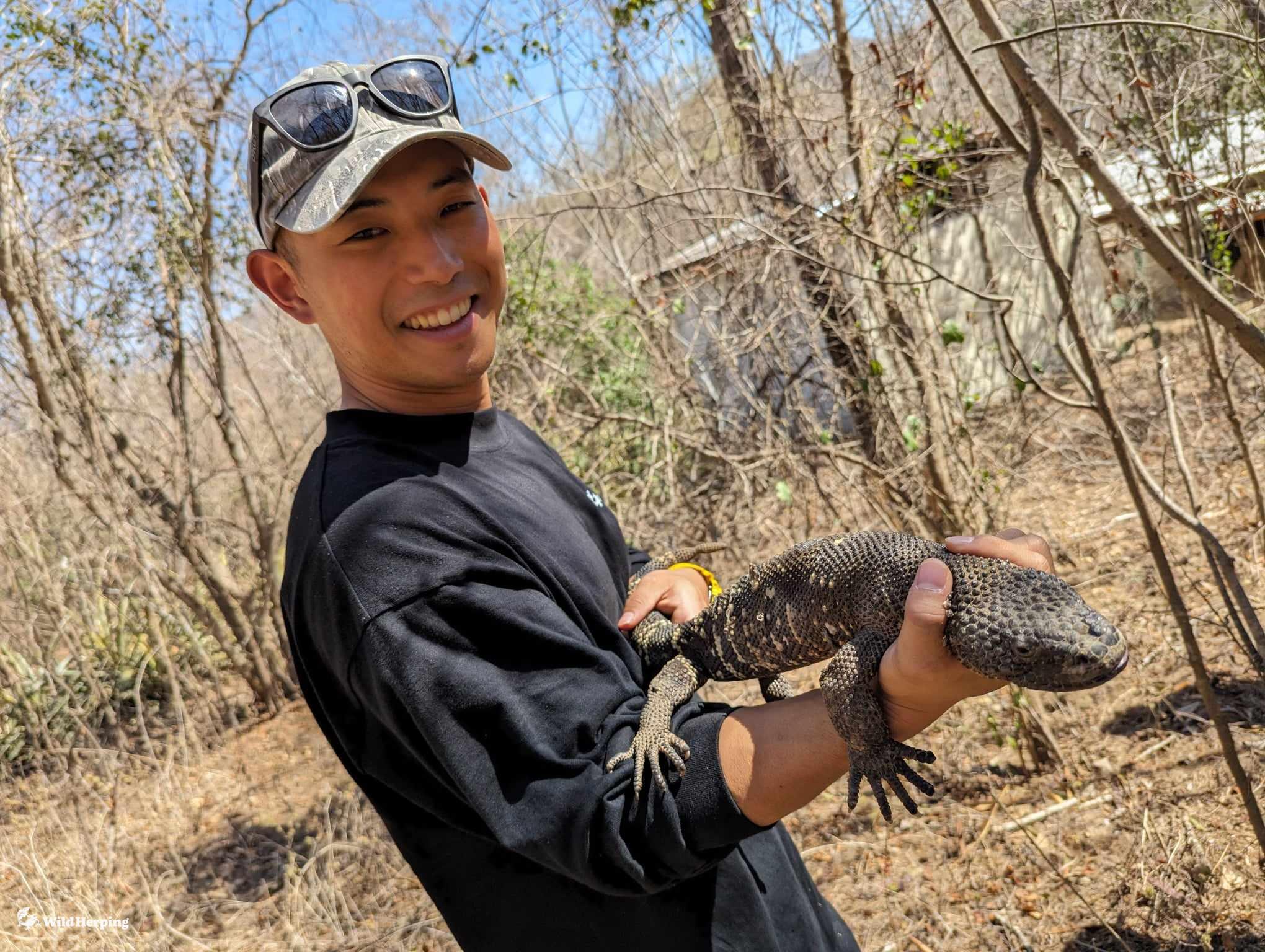
The Okinawa Ishikawa frog (Odorrana ishikawae), also known as Ishikawa’s frog, is widely considered Japan’s most beautiful frog species. It’s a highly sought-after species for those who go herping in Japan. Typically, these frogs are green, but on rare occasions, individuals with a lack of yellow pigment display a stunning blue coloration. Some even exhibit a blend of blue and green, referred to as mosaic-colored individuals.
In this article, I’ll share my personal experience of encountering both blue and mosaic-colored Ishikawa frogs. Hopefully, it will inspire and provide useful insights for anyone looking to find these rare frogs in the wild.
Finding a Blue Ishikawa Frog
I spotted a blue Ishikawa frog while walking along a concrete forest road on a rainy day. I wasn’t actively searching for Ishikawa frogs at the time, so I was completely caught off guard when I saw something hop across the path—a color I had never seen before. Upon closer inspection, I realized it was a blue Ishikawa frog! As this species is designated as a rare wild animal in Okinawa, touching or disturbing them is strictly prohibited. I approached cautiously to avoid scaring it off and managed to take some photos. Luckily, the frog stayed on the side of the road for about three minutes, giving me ample time to capture its beauty.
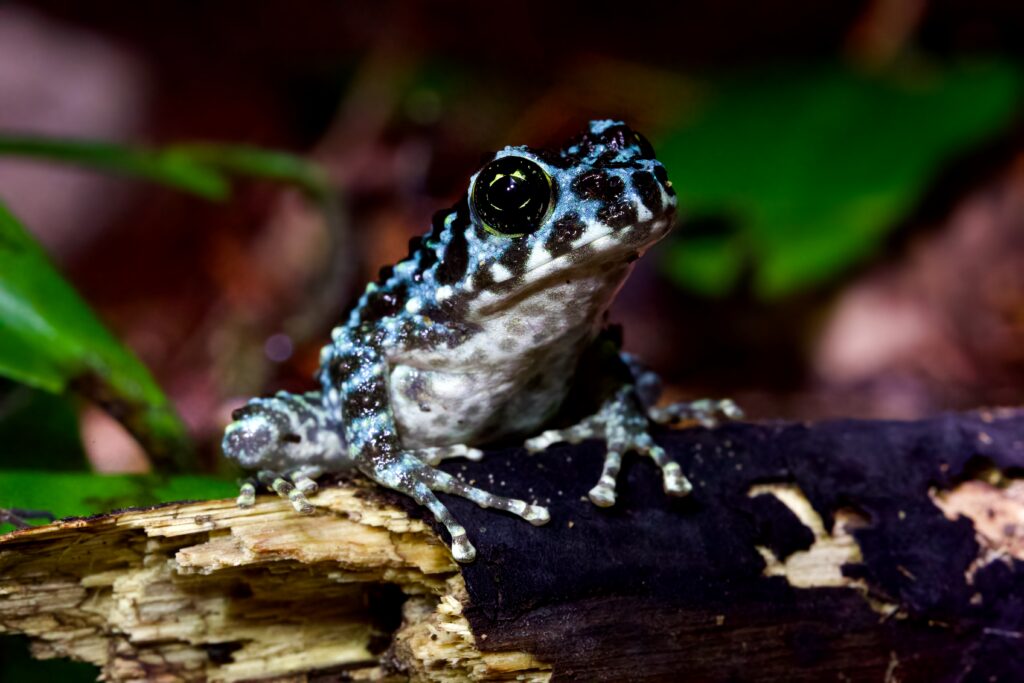
Encountering a Mosaic Ishikawa Frog
My first sighting of an Ishikawa frog was a mosaic-colored individual, during my first herping trip to Okinawa. I vividly remember using my macro lens, trying to get the perfect shot. I found this frog sitting on a rock by a stream, far from where I stood. Slowly, I crept closer, all the while keeping an eye out for any pit vipers (known as Himehabu) that might be lurking nearby. It was a thrilling and memorable experience, and one I’ll never forget.
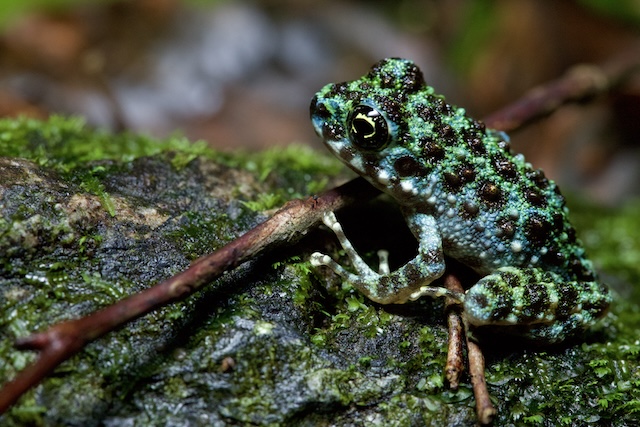
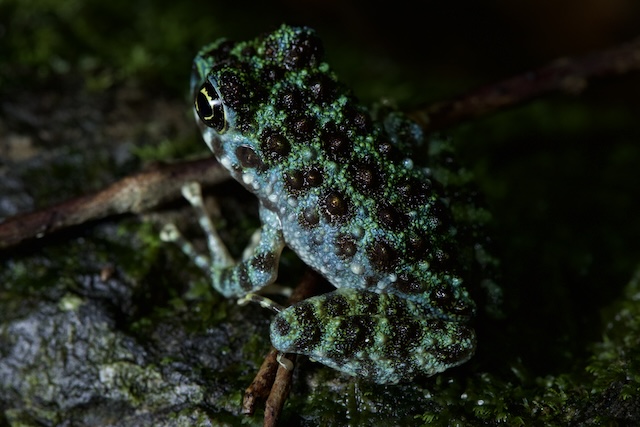
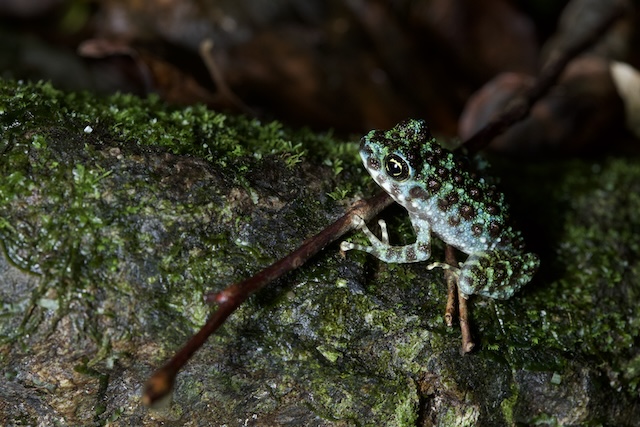
Typical Green Ishikawa Frog
While on the topic, here’s a note about the green Ishikawa frog, which is the standard coloration for this species. The frogs I’ve mentioned earlier were all juvenile, as you can tell from the photos. Some speculate that these frogs may start out blue when young and turn green as they mature. However, I’ve encountered both blue and mosaic-colored juveniles, as well as green ones, all roughly the same size. This suggests that color variation isn’t necessarily linked to age. Interestingly, there have been sightings of adult blue Ishikawa frogs, further deepening the mystery surrounding this species’ unique coloration.
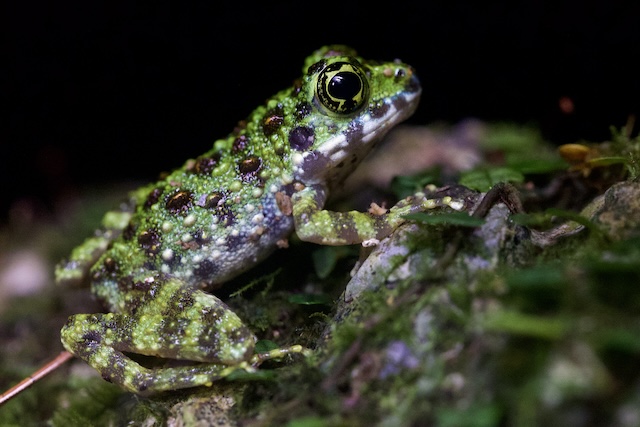
How to Find a Blue Ishikawa Frog
If you’re eager to see a blue Ishikawa frog, you’ll need to explore various areas. While finding them can feel like a stroke of luck, there are locations known to produce blue frogs more frequently. In certain streams, nearly all of the Ishikawa frogs spotted are blue, although such places are rare. If you want to make the most of your herping trip to Okinawa and increase your chances of spotting one of these elusive frogs, I highly recommend seeking advice from a local guide who knows the best herping spots.
Conclusion
Herping in Okinawa offers a unique chance to encounter the beautiful Ishikawa frog, and if you’re lucky, you may even find a rare blue Ishikawa frog. With the right preparation and a bit of patience, you could be one of the fortunate few to see these stunning amphibians in their natural habitat.
For more information on herping in Okinawa, be sure to check out other articles on my blog!



